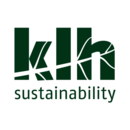Sustainable Timber in Construction
Contents |
[edit] Introduction
If sustainably sourced, timber is undoubtedly one of the most environmentally-friendly materials currently available, being a natural carbon sink and truly renewable. This has made timber a popular material among sustainability champions and protagonists of green construction. Although its use in construction dates back many centuries, the advent of Cross Laminated Timber (CLT) has now made it possible to construct complete buildings in timber.
[edit] What is sustainable timber?
Sustainable timber refers to timber that has been harvested responsibly from well managed forests that are continuously replenished; and ensure that there is no damage to the surrounding environment, or to native flora and fauna.
In the UK two main certification schemes, Forest Stewardship Council (FSC) and Programme for the Endorsement of Forest Certification (PEFC), assure that all wood and wood-based products originate from sustainable sources.
[edit] Timber and climate change
Timber has a significantly lower embodied carbon footprint compared to other mainstream construction materials. This is due to the minimal processing required, even when accounting for the process of laminating (glulam or cross-laminated timber) which is generally required to create structural timber products.
If sustainably sourced, using timber can have an additional positive environmental impact because trees absorb carbon dioxide through photosynthesis and lock it away as carbon, thus removing it from the atmosphere. This phenomenon is called sequestration and can essentially offset the processing and transportation energy associated with timber products. Therefore, timber can be considered a carbon negative material. It is however important to remember that the sequestered carbon will be released at the end of life of the timber product (unless it is reused or recycled). The global warming implications of disposal options vary and are detailed in the table below.
It is interesting to note that in response to the Paris Agreement (COP21), scientists proposed a range of “negative emissions technologies (NETs) in order to limit climate change to “well below 2C”, three of which relate to timber and its capacity to absorb and store carbon from the atmosphere: afforestation and reforestation, building with biomass and biomass with carbon capture and storage.
The recently published UK’s 25 year environmental plan also recognises the significance of using sustainable resources, and specifically recommends increasing supplies of timber.
[edit] Timber and life-cycle impacts
Recent studies have found that the life cycle emissions from a CLT framed building (without including sequestration) can be about 30-50% lower than a typical concrete framed building. When sequestration is included, the benefit can be much more significant. However, it is important to note that these results assume that 100% of the timber is diverted from landfill at the end of its useful life. If timber is landfilled at the end of its useful life, analysis has suggested that the net emissions from a CLT framed building could exceed the life cycle emissions from a typical concrete framed building.
When timber is landfilled it rots and releases up to 60% of the sequestered carbon back to the atmosphere as methane, which is 25 times worse than carbon dioxide in terms of global warming impact.
It is important therefore to explore the wider implications of sustainable solutions to ensure they are not creating problems for future generations.
[edit] Related articles on Designing Buildings
- Chain of custody.
- Confederation of Timber Industries.
- Delivering sustainable low energy housing with softwood timber frame.
- Environmental plan.
- European Union Timber Regulation.
- Forests.
- Forest ownership.
- Forest Stewardship Council.
- Green Seal.
- Legal and sustainable timber.
- Legally harvested and traded timber.
- Programme for the Endorsement of Forest Certification.
- Sustainability.
- Sustainable materials.
- Sustainable Wood.
- Sustainably procuring tropical hardwood.
- Timber.
- Whole life carbon assessment of timber
Featured articles and news
RTPI leader to become new CIOB Chief Executive Officer
Dr Victoria Hills MRTPI, FICE to take over after Caroline Gumble’s departure.
Social and affordable housing, a long term plan for delivery
The “Delivering a Decade of Renewal for Social and Affordable Housing” strategy sets out future path.
A change to adoptive architecture
Effects of global weather warming on architectural detailing, material choice and human interaction.
The proposed publicly owned and backed subsidiary of Homes England, to facilitate new homes.
How big is the problem and what can we do to mitigate the effects?
Overheating guidance and tools for building designers
A number of cool guides to help with the heat.
The UK's Modern Industrial Strategy: A 10 year plan
Previous consultation criticism, current key elements and general support with some persisting reservations.
Building Safety Regulator reforms
New roles, new staff and a new fast track service pave the way for a single construction regulator.
Architectural Technologist CPDs and Communications
CIAT CPD… and how you can do it!
Cooling centres and cool spaces
Managing extreme heat in cities by directing the public to places for heat stress relief and water sources.
Winter gardens: A brief history and warm variations
Extending the season with glass in different forms and terms.
Restoring Great Yarmouth's Winter Gardens
Transforming one of the least sustainable constructions imaginable.
Construction Skills Mission Board launch sector drive
Newly formed government and industry collaboration set strategy for recruiting an additional 100,000 construction workers a year.
New Architects Code comes into effect in September 2025
ARB Architects Code of Conduct and Practice available with ongoing consultation regarding guidance.
Welsh Skills Body (Medr) launches ambitious plan
The new skills body brings together funding and regulation of tertiary education and research for the devolved nation.
Paul Gandy FCIOB announced as next CIOB President
Former Tilbury Douglas CEO takes helm.
UK Infrastructure: A 10 Year Strategy. In brief with reactions
With the National Infrastructure and Service Transformation Authority (NISTA).























